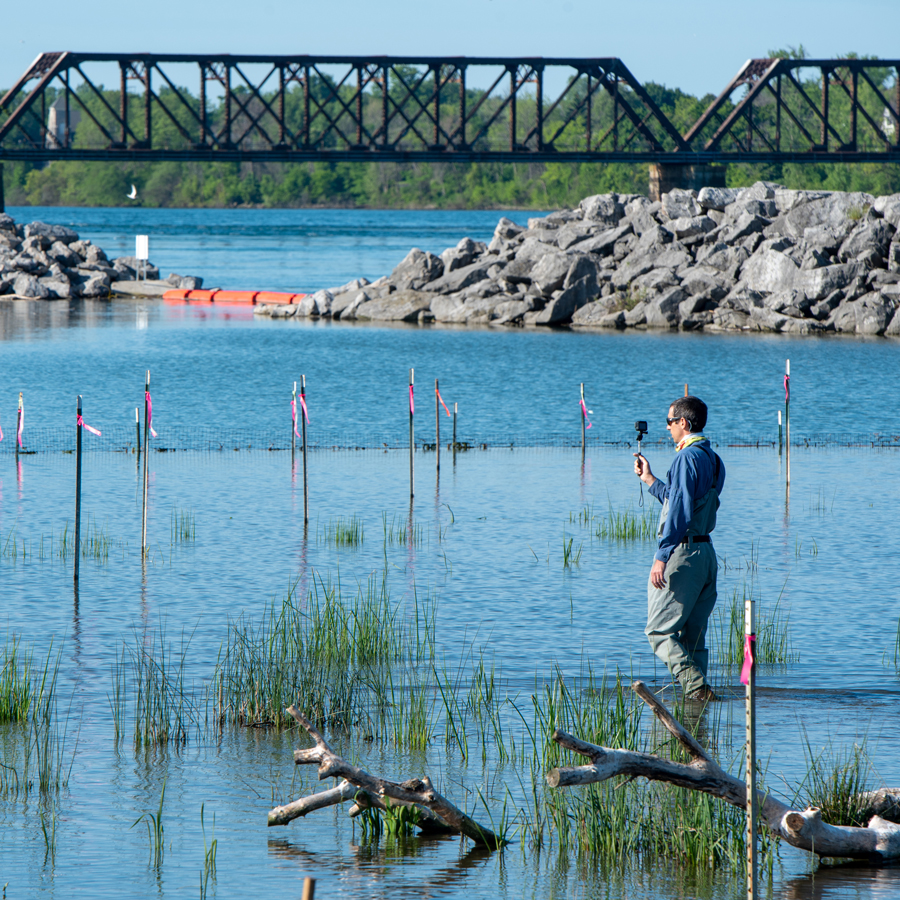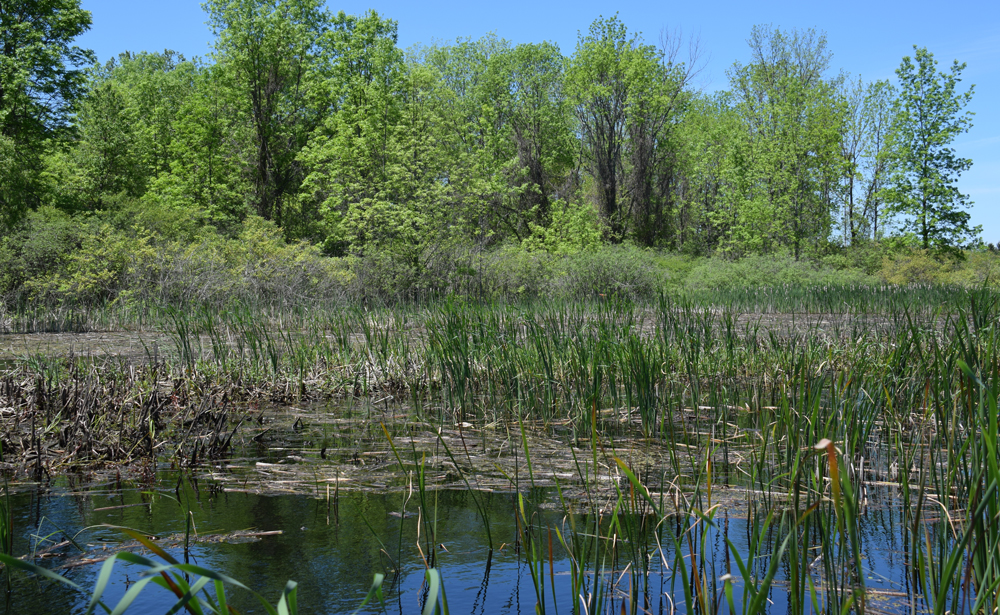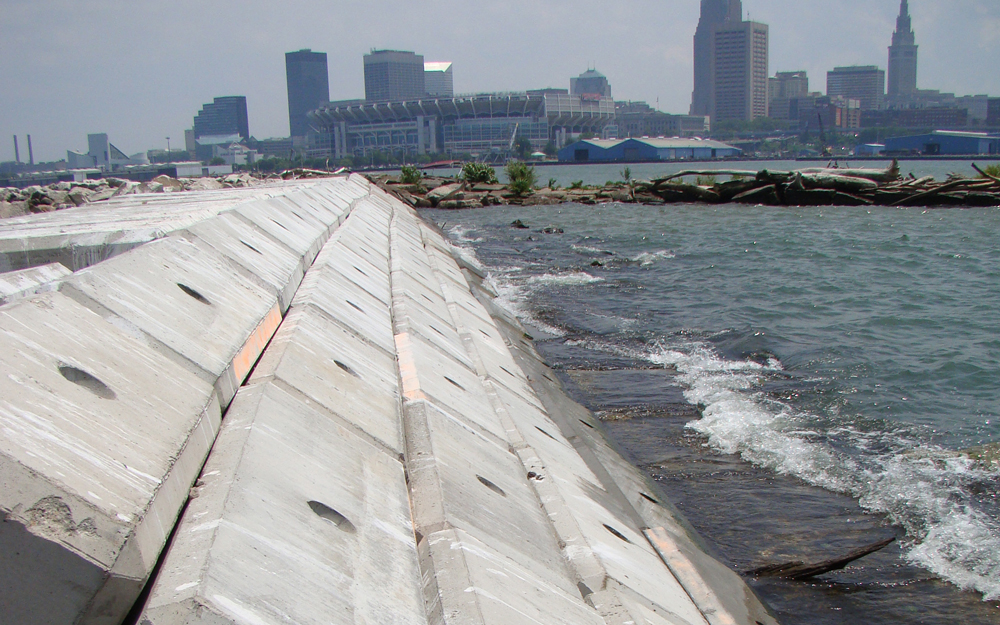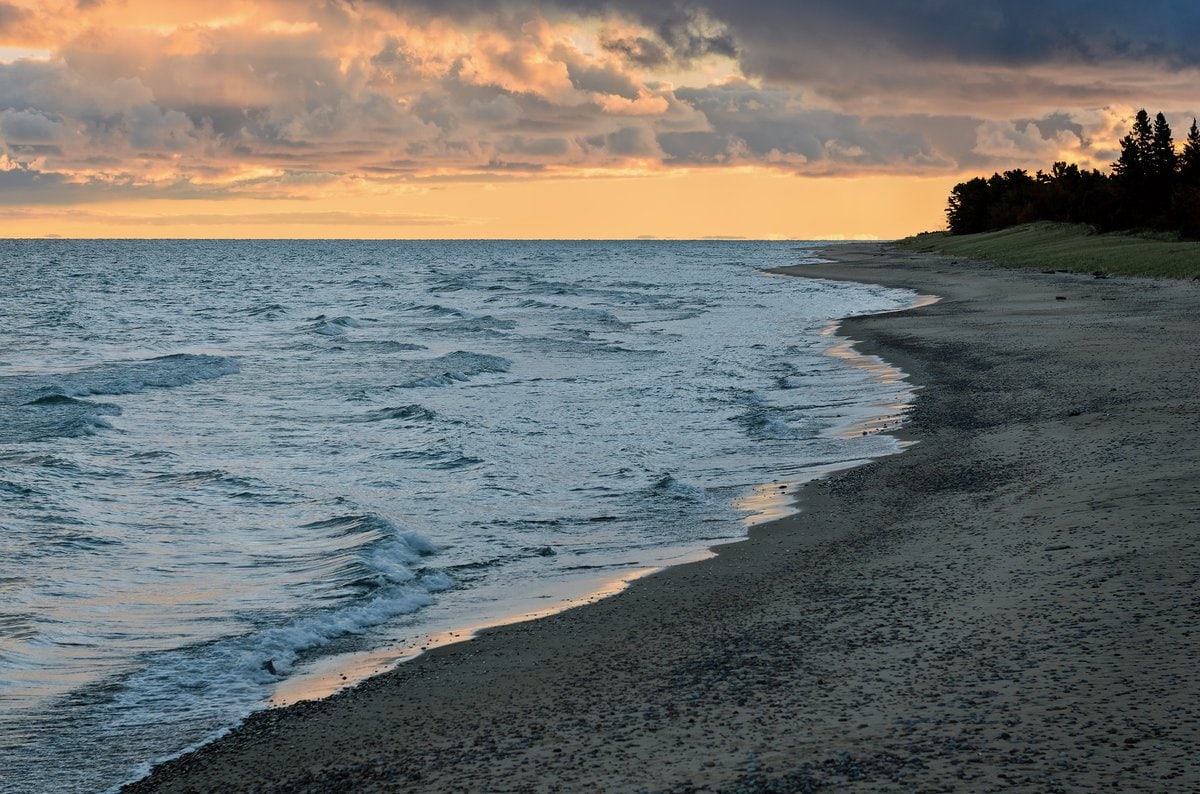This project is featured in Engineering With Nature: An Atlas, Volume 2.
Location: Buffalo, New York, United States.
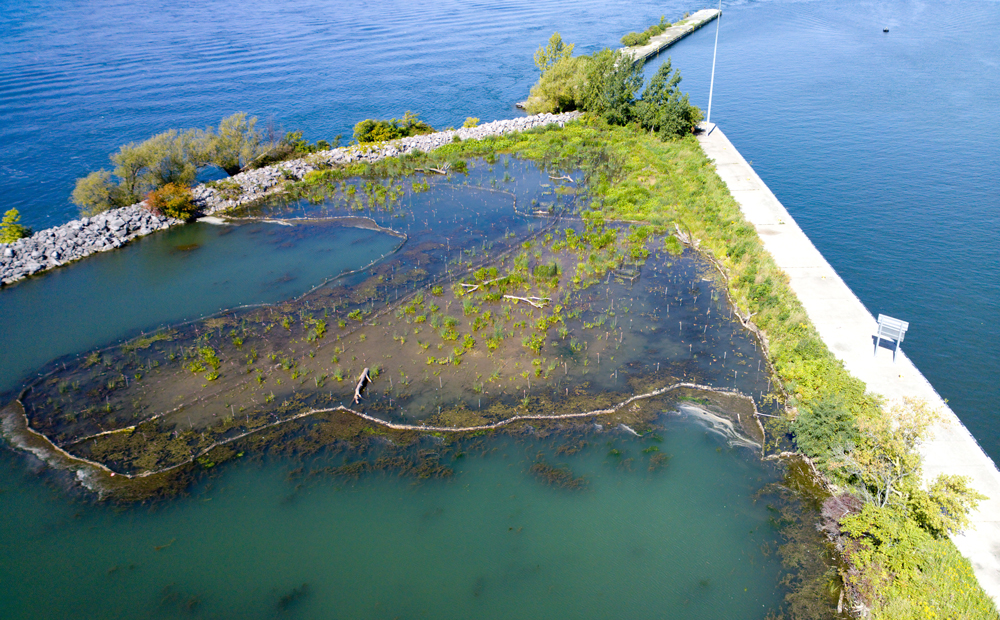
A first-of-its-kind project using dredged sediment from the Buffalo River. Unity Island is located in the Upper Niagara River, which connects Lake Erie to Lake Ontario, and falls within the Niagara River Area of Concern (AOC). Here, industrial development in the twentieth century, combined with the development of marinas, private docks, and water-control structures, led to the loss of thousands of hectares of coastal wetlands, disconnected bodies of water, and ponds too deep to support wetland vegetation. In 2018, the U.S. Army Corps of Engineers (USACE)–Buffalo District partnered with the city of Buffalo to reuse 43,000 cubic meters of dredged sediment from the Buffalo River navigation channel to create 2 hectares of emergent and submerged wetland habitat and reconnect 4 hectares of backwater habitat to the main stem of the Niagara River. The project was one of a suite of sediment remediation and habitat restoration projects that were identified through a robust Great Lakes Restoration Initiative–funded, state led, and locally influenced process. Today, at Unity Island, native emergent and submerged aquatic vegetation flourishes on the placed dredged sediment, and the natural recruitment of plants from the river via the new connection has established a strong native plant community.
Producing Efficiencies
As the Unity Island project was the first of its kind within the Great Lakes, the project team conducted a thorough feasibility study under the Continuing Authorities Program, Section 204 authority. The study examined the characteristics of dredged sediment in the Buffalo River and is now an example for other projects. This knowledge applies to at least three other projects in the Buffalo District Civil Works Program, allowing them to undergo an abbreviated feasibility phase. Also, the beneficial use of dredged sediment reduced the need for a confined disposal facility and provided a native seed bed, both leading to significant cost savings.
Using Natural Processes
By simply creating an opening in an existing rubblemound structure, this project has provided habitat connectivity between the Niagara River and four hectares of slack water, creating coastal wetland habitat directly adjacent to the main stem of the Upper Niagara River. Natural recruitment of native plants floating in from the river greatly enhanced the establishment of the wetland plant community, which benefits local wildlife such as the northern pike (Esox lucius) and the state-threatened common tern (Sterna hirundo).
Broadening Benefits
With many of the coastal wetlands in the Niagara area destroyed due to urban development, restoring even a small amount of wetland habitat can make a big difference for the survival of native plant, fish, reptile, amphibian, and migratory and local bird species. The additional tourism activity generated by the Great Lakes restoration project has boosted the local economy. Furthermore, the project has boosted local housing prices, demonstrating the value of these amenities to local residents.

Promoting Collaboration
This project required a wide variety of engagement strategies and included a broad group of stakeholders: the USACE Buffalo District, the Niagara River Greenway Habitat Enhancement Restoration Fund, the city of Buffalo, the New York State Department of Environmental Conservation, and the Niagara River Area of Concern Remedial Action Committee. Funding from the Great Lakes Restoration Initiative and lessons from a comprehensive portfolio of previous projects on the Buffalo River made this project possible.
